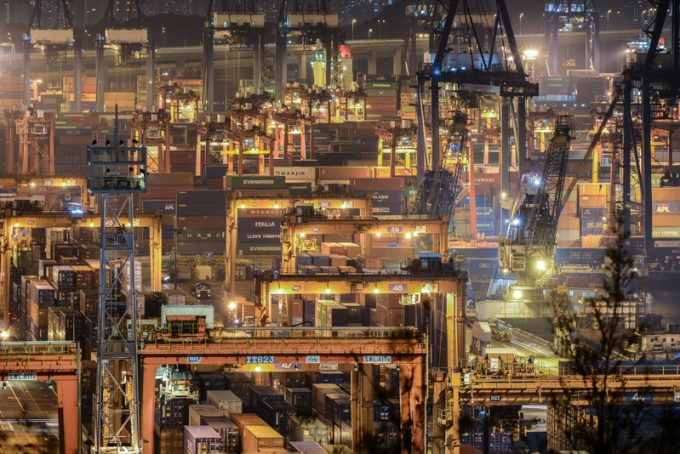Ultra large box ships and the distorted shipping cycle
Received wisdom – are the wheels coming off?

Port and terminal consolidation is the “only long-term answer” to mitigate the impact of fewer calls of ultra large container vessels (ULCVs) bringing bigger box exchanges, argues Drewry.
Neil Davidson, senior analyst at Drewry’s ports & terminal practice, said yesterday that more M&A activity, “both operationally ...
CMA CGM South Korean staff strike over bonuses after bumper 2024 profit
MSC switches two more Asia-Europe port calls from congested Antwerp
Ports and supply chain operators weigh in on funding for CPB
Nightmare for Bangladeshi exporters as congestion and tariffs bite
Carriers introduce surcharges as congestion builds at African ports
Box ship overcapacity threat from carrier appetite for new tonnage
CMA airline returns two freighters, while ANA takeover of NCA looms
Tradelanes: Export boom in Indian sub-continent triggers rise in airfreight rates

Comment on this article
Ross Delaney
January 26, 2017 at 1:11 am“Port and container terminal consolidation can mitigate the impact of ULCVs”
or in other words according to us at Gilead….. “let’s double down on a broken supply chain system”
More high cost inland and beyond spend so those long the highest cost infrastructure (megaport & ULCVs & rail) can be bailed-out; just like they were bailed-in in the first instance by means of public funded subsidies.
Ports need to be as close to origin and destination as is practicable. Hub port use is merely for the non-practicable, so let’s not continue subsidising the illogical and creating inefficient new realities as we have been.
Richard Rendell
January 27, 2017 at 3:19 amTrump’s border tariff to build wall could put an end to Mexico’s Pacific Coast container terminal expansion.